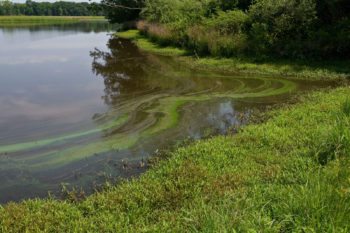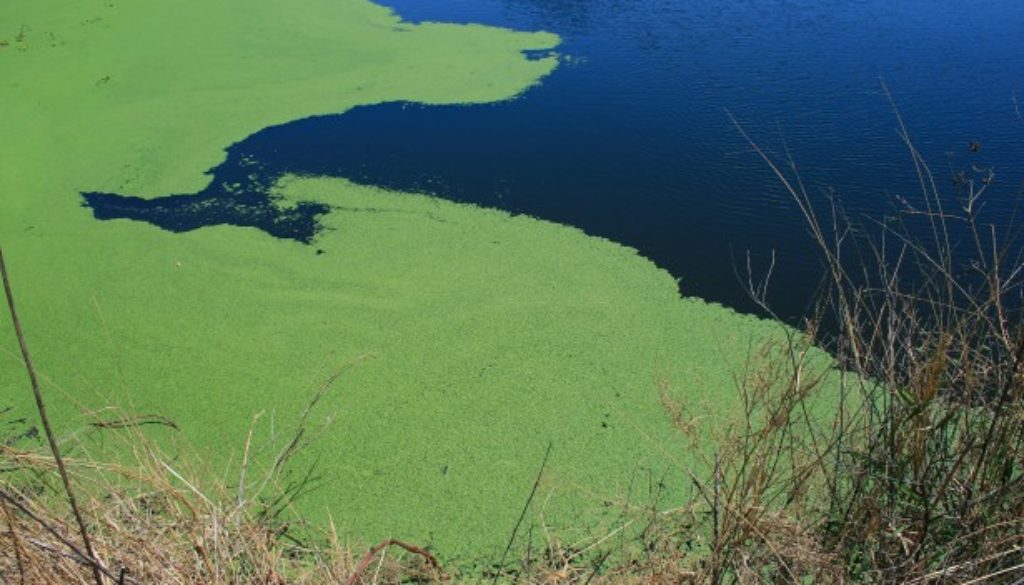Summer Is Toxic Algae Season: What You Need to Know
By Gary Belan, American Rivers
What is a toxic algae outbreak and where do they occur?
If your river or lake is choked with green slime, it might be a toxic algae outbreak. These outbreaks are triggered by several factors, including warm temperatures and excess nutrients from agricultural and urban runoff. Last year there were toxic algae outbreaks in Oregon, Florida and other states across the country. Because the algae thrives in warm temperatures, summer is the time to be aware of outbreaks in our communities.
How can they harm people and pets?
Toxic algae outbreaks are a serious threat to our health, economy, drinking water supplies and fisheries. The algae releases harmful toxins in the water as it grows. It can be toxic if consumed, causes skin and respiratory irritation, and can be fatal to dogs that swim in or drink the water. Salem, the capital of Oregon, was under an advisory for weeks in the summer of 2018 because of a toxic algae outbreak in its water supply. Children under six years old, pregnant women, nursing mothers and adults with compromised immune systems were told not to drink the water. An outbreak in Lake Erie in 2014 left 500,000 people in Toledo, Ohio without drinking water for three days.

What causes outbreaks?
Land-use practices and climate change are making toxic algae outbreaks worse. That’s because the algae is fueled by phosphorous and nitrogen in fertilizer running off farmlands, and runoff from urban and suburban areas. Plus, the algae thrives in warmer waters – and temperatures are rising with climate change.
What can we do to stop these outbreaks and protect clean water?
On a national level, one crucial first step is stopping the Trump administration’s rollback of the Clean Water Rule. Among many other benefits, this rule protects the streams and wetlands that are natural sinks for excess nutrients. They keep chemicals out of our water supplies, which prevents algal blooms.
On the local level, we need to keep advancing green infrastructure solutions that reduce the flow of pollution into local streams. What does this look like? – green roofs, more trees, rain gardens, more natural areas. All of these solutions naturally absorb and filter pollution, minimizing the toxins that flow into our streams, rivers and lakes.
Learn more
Visit Environmental Working Group and the Center for Disease Control to learn more about the health impacts of toxic algae.

